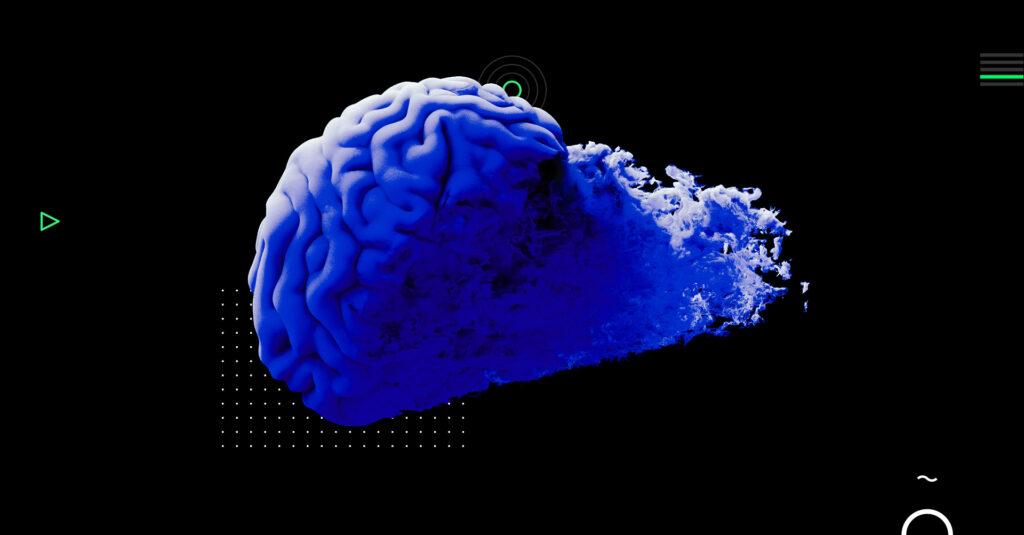In the grand arena of technology, generative AI parades as a prolific artistic force, penning vast volumes of text in the blink of an eye and effortlessly crafting digital art. The unfettered proliferation of AI-authored content, mirrored on data harvested from the internet, sets up an intriguing paradox: the serpent of AI is devouring its own digital tail.
Let us explain. Anxieties around generative AI are no longer limited to job security. Rather, we’re now compelled to question our very essence, asking the big question–where will originality land post this new wave of AI capabilities?
Let’s speculate a bit deeper.
The perils of over reliance on generative AI
Like any good plot twist, even our AI champion faces its own challenges. The growing ubiquity of generative AI in tasks traditionally handled by humans raises concerns. For instance, a recent study revealed an alarming percentage of workers on Amazon’s Mechanical Turks platforms were using LLMs for text-based tasks, potentially diluting the “human factor” in data.
In another study, researchers from top universities highlighted the potential risks of training AI on AI-generated “synthetic” data. Meaning, without ways to filter out AI-made text, there’s a risk of AI models self-cannibalizing, leading to a catastrophic collapse of system integrity.
All together, this suggests that we could soon find ourselves in an endless loop of low-quality or misinformed content–a scenario akin to filling the libraries of the world with poorly written novels and expecting the next great literary masterpiece to emerge.
Generative AI creativity vs human creativity
In the battle royale of creativity, we pit the calculating prowess of AI against the emotional complexity of the human mind. A war of art, if you will.
And the crux of this apprehension lies in the training of generative AI. We’ve handed AI models, like ChatGPT, an immense textual playground sculpted by humans. Yet, if these AI models birth more digital offspring, we fear an endless cycle of homogeneity, limiting our narratives, thought patterns, and very existence.
Is this the death knell of originality?
Interestingly, and not in terrible contrast to generative AI, human creativity also thrives on imitation. Remember the Renaissance era’s obsession with Classical Greek art? Or the echoes of Shakespeare’s narratives in contemporary literature? The wheels of creativity have always turned on the axle of imitation and inspiration.
In fact, a recent study posits that pure originality is a myth. Creativity, it suggests, is a balance between memory and control—invoking past experiences and strategically juxtaposing them to create something “new”.
Doesn’t that sound like the inner-workings of generative AI to you?
Is generative AI and creativity actually a trade off?
At this time, the prophetic words of a team from Epoch AI ring true: without a constant stream of high-quality human-made content, the AI creativity surge may come to a premature end by 2027. But is that such a bad thing?
Perhaps we’re neglecting the value of human-crafted originality amidst our infatuation with AI. There’s a certain charm, an authenticity that resonates within a handmade artifact amidst the uniformity of factory-made goods. Similarly, in a sea of AI-generated content, human-made pieces bring a nuance, a voice, that’s uniquely human.
True, AI has shown glimmers of creativity too. DALL-E 2, trained on a myriad of labeled pictures, can emulate art styles across epochs and even generate fantastical creatures with surreal precision. Yet, it’s still not truly “original” so much as repurposed. While that’s not a crime, it doesn’t quite match the foundation made from the building blocks of human creativity.
This is where companies like WellSaid Labs come into play. By adopting ethical AI practices that uphold consent from creators, we help preserve this artistic integrity. This approach maintains a symbiotic interplay between AI and human creativity, ensuring the authenticity and integrity of human-made content amidst the rapid generation of AI-authored material.
Conclusion
As we stand on the precipice of an AI-powered future, we’ll continue to question whether generative AI is the death knell or the dawn of creativity. Most likely, the truth lies somewhere in between.
Some might argue that the technology is still in its infancy, while others could stress the need for ongoing human oversight. Either way, training AI models to create isn’t just about feeding them infinite data, but about steering them with the right algorithmic tools as well.
Without a doubt, generative AI will become a fundamental aspect of our existence within a decade (if not sooner). And as it does, we must remember to wield this power responsibly. Otherwise, we risk an AI dystopia marked by mass homogenization.
The looming AI winter might not thaw with more data but with a blend of algorithmic breakthroughs and a renewed emphasis on human originality. As we venture further into the generative AI age, the interplay between human creativity and AI-generated content needs to harmonize, not oppose.
In the end, we must remember that while AI can automate, optimize, and accelerate, it’s the human touch that infuses authenticity, meaning, and depth into our creations.
After all, we created AI, didn’t we?

